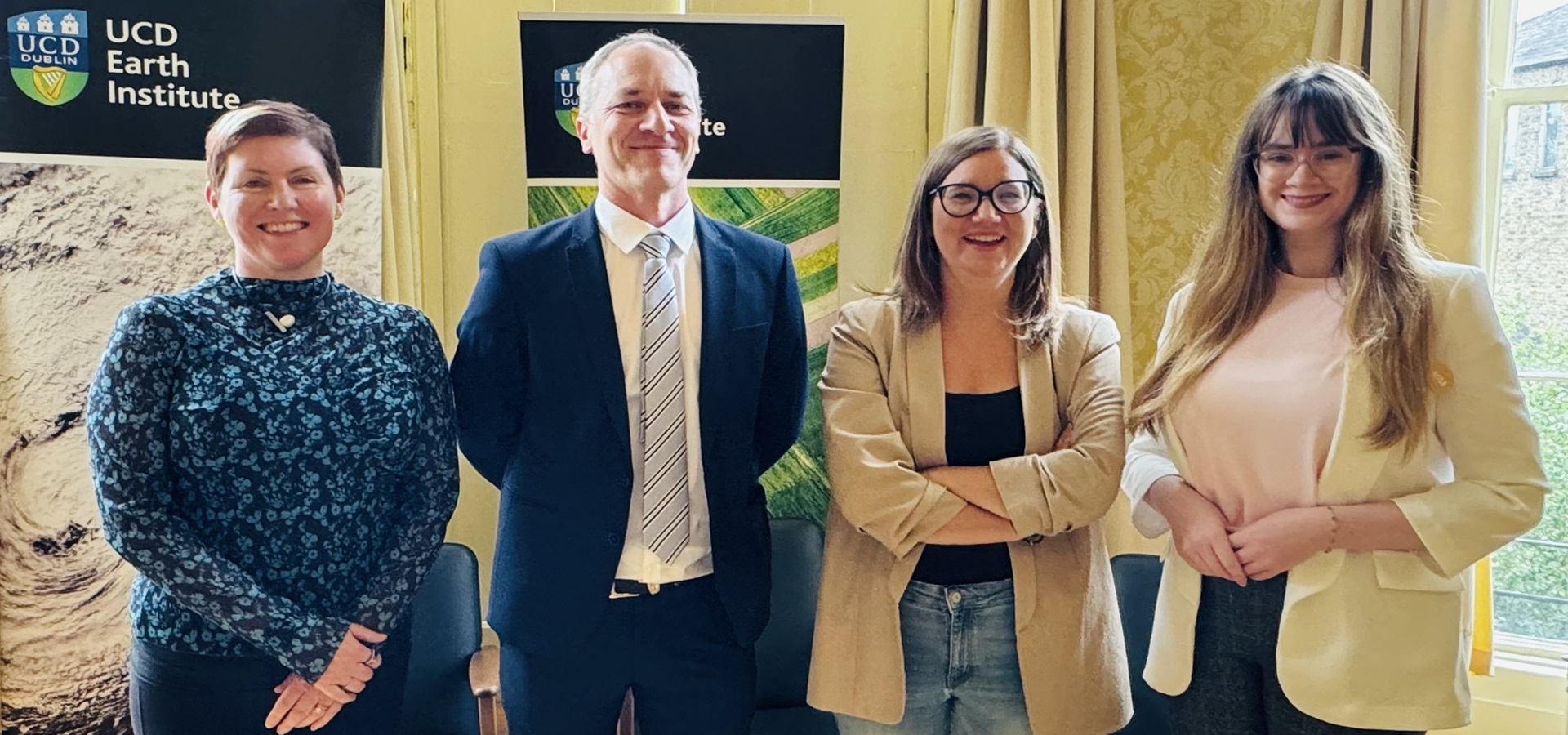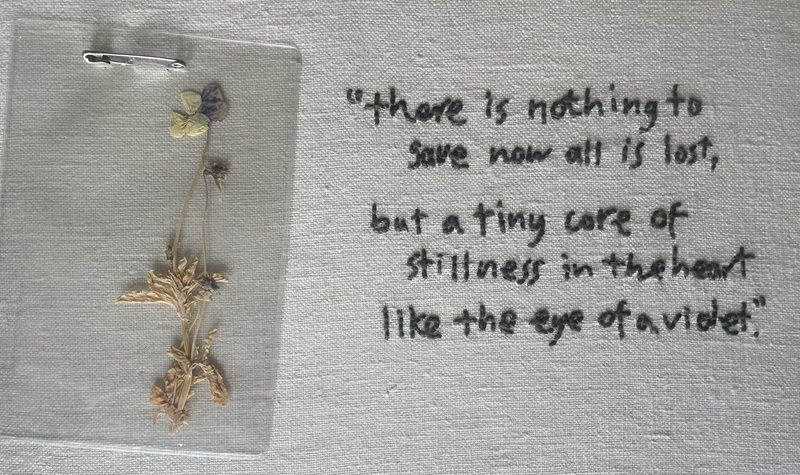Innovation has become a popular buzzword and political promise in sustainability circles. Back in November, COP27 in Sharm El-Sheikh even had a dedicated ‘Innovation Zone’. But what is innovation, and what can we learn about innovation for sustainability by thinking about it in the context of the bioeconomy asks Hannah Gould, a PhD candidate at BiOrbic.
Cut any proposal for a sustainability transition (like for sustainable energy, transport or food) and it will probably bleed ‘innovation’. The concept of innovation has undergone a ‘glow-up’ in recent times. Once a strict scientific term, it is now a political promise, slogan or buzzword. International organisations throw it around like confetti at big conferences, and national governments sprinkle it like glitter across their policy documents. Back in November at COP27 in Sharm El-Sheikh, there was a dedicated ‘Innovation Zone’. The message is, we can innovate our way out of this!
So, innovation is our supposed sparkly solution to a broad range of problems, but what is it? Joseph Schumpeter, aka, the “father of creative destruction,” is not the villain of a film-franchise as his nickname suggests, but a 20th century economic thinker who had some ideas about innovation. He suggested that innovation is a trilogy of invention (the generation of new ideas), innovation (the development of new ideas into processes and products), and diffusion (the spread of new processes and products across potential markets).
In 2012, the European Commission published its first bioeconomy strategy, ‘ Innovating for Sustainable Growth: A Bioeconomy for Europe’. At its simplest, the idea behind the EU’s vision of a bioeconomy is developing products using plants, animals and organic-waste instead of from fossil fuels. To diffuse these new products requires bio-based innovations to advance to the point that they reach competitiveness with fossil-based equivalents. Today, around 50 countries around the world have adopted bioeconomy strategies with the expectation of addressing challenges including the depletion of fossil resources, and the environmental impact of fossil-based production and consumption. Ireland’s own Bioeconomy Action Plan was open for public consultation until 27 January 2023.
 |
|
Credit: EU regions with bioeconomy strategies. Bioeconomy strategy development in EU regions, EU, 2022. |
The geo-political impacts of Russia’s illegal invasion of Ukraine have underlined the peril of a world order dependent on petrostates. However, the bioeconomy is not an inherently sustainable solution. In fact, increasing the demand for bio-based resources can impose additional pressures on ecosystems that are so important to us. The bioeconomy comes with questions about the sustainability of using biomass; where to locate biorefineries; and what products should be produced from biomass and on what scale. Innovation is why you can order a taxi on a smartphone and why your taxi isn’t a horse, but it’s a double-edged sword. Innovations, such as utilising biomass for energy, materials and pharmaceutical applications, can involve very complex trade-offs and often unforeseen consequences, as the rise and subsequent crisis of EU biofuel policy illustrates.
To meet today’s grand challenges, we have to aim for a sustainable bioeconomy, not simply a bioeconomy. To ensure the sustainability of a bioeconomy, innovation must be steered towards pathways with favourable environmental and social outcomes. Innovations that promote the cascading use of biomass is a good start. A cascading approach means energy recovery from biomass is the last option, and only an option after all higher-value products and services have been exhausted from the biomass. Innovations must also be socially acceptable. This was addressed in a synthesis report published in 2020 by the European Commission’s ‘Knowledge Centre for Bioeconomy’, which introduced the concept of the bioWEconomy to place more emphasis on citizen participation and societal value than previous bioeconomy iterations focused on economic-growth goals. This arguably shifts the focus of innovation away from research focused on large-scale projects with the objective of achieving efficiencies that compete with fossil-based processes, to innovations that support small-scale, community-run biorefineries that create meaningful employment opportunities.
It follows that ‘innovation’ for a sustainable bioeconomy isn’t just about technological innovation, but about social innovation including new business models and social practices. For example, innovation might look like connecting currently totally unconnected people to work together to recover by-products and wastes and integrate them into new value chains. Innovation should also look like overhauling our consumption habits from an ‘own-then-dispose’ model, towards more circular habits of sharing and recycling.
So, what can we learn from thinking about innovation in the context of the bioeconomy? Well, there are a few things worth considering the next time you come across ‘innovation’ draped in a feather boa, dressed up as our ‘cure-all’.
Firstly, innovation is not in itself, always good. So have the potential consequences of the innovation been considered from a range of perspectives? It’s easy to get caught up in the early hype stages of innovation and give too little consideration to new challenges that might come with the innovation when it’s further down the line or at scale. This is why interdisciplinary collaboration (at as early a stage as possible) is so important.
Secondly, is the innovation a supposed ‘silver bullet’ or ‘techno-fix’? Is the innovation contributing to addressing the root of a problem? For example , a central hope of many bioeconomy strategies is its potential to improve food security through producing higher yields, utilising food waste, or creating new forms of protein. While useful, we also need to address the root causes of unsustainable and inequitable food systems.
Relatedly, which category of innovation does the innovation fall into? The ‘business-as-usual’ category or the sustainability-oriented category? While business-as-usual mainly supports incremental innovations along established trajectories (i.e., tinkering within the system), sustainability-oriented innovation seeks a systems change (i.e., table-flipping the system). The challenges we face in terms of climate breakdown and economic meltdown require us to push more in the direction of the latter.
In the end, innovation needs imagination. To borrow and imperfectly apply an analogy from Rob Hopkins, author of 'From What Is to What If’ and podcast host of ‘From What If To What Next’ (I recommend both!) - we have a habit of focusing on adding new toppings to our pizza, when sometimes we need to think about a different meal entirely.
Essay first published 3 February 2023.
About the author
Hannah Gould is a PhD candidate at BiOrbic researching public policy and the bioeconomy. Alongside this, she is involved in ongoing research exploring the impact of Brexit for environmental cooperation on the island of Ireland. She has an MSc in Environmental Policy, UCD where she was awarded the Convery Medal (2019) for outstanding academic achievement. Prior to this, Hannah spent four years working for The Guardian, editing and writing about sustainable business issues.
About the series
The A-Z of Environmental, Climate and Sustainability Research is a new series of short essays by UCD postdoctoral and postgraduate researchers, technical and research support staff, about their work. The series is developed and curated by the Earth Institute Associate Member Committee led by Hannah Gould, a PhD student at BiOrbic and the UCD School of Architecture, Planning and Environmental Policy, and Earth Institute Communications and Engagement Officer Liz Bruton. If you'd like to submit a piece for the series do get in touch!
Find out more about the Anthropocene with Nick Scroxton, Bees with Katherine Burns, Cannabis with Caroline Dowling, Degrowth with Ciarán O'Brien, Education with Georgina Fagan, Finance with Shane McGuinness, Gaia with Federico Cerrone, Hydrometry with Kate de Smeth, Innovation with Hannah Gould, Justice with Lauren Minion, Kelp with Priya Pollard, Landscape part 1 with Tomas Buitendijk, Landscape part 2 with Amy Strecker and Amanda Byer, Reusing microbial ‘bathwater’ for sustainable drug production with Laura Murphy, and Mammals with Virginia Morera-Pujol in our latest essays.
Further reading
Book: Hopkins, R. (2019). From what is to what if: Unleashing the power of imagination to create the future we want , Chelsea Green Publishing.
Journal paper (open access): Conceptualizing controversies in the EU circular bioeconomy transition by Jan Starke et al., (2022) in Ambio, A Journal of Environment and Society.
EU Report: Future transitions for the Bioeconomy towards Sustainable Development and a Climate-Neutral Economy - Foresight Scenarios for the EU bioeconomy in 2050 https://publications.jrc.ec.europa.eu/repository/handle/JRC123532
Irish Government document: Bioeconomy Action Plan Consultation - https://www.gov.ie/en/consultation/fd200-bioeconomy-action-plan-consultation/

